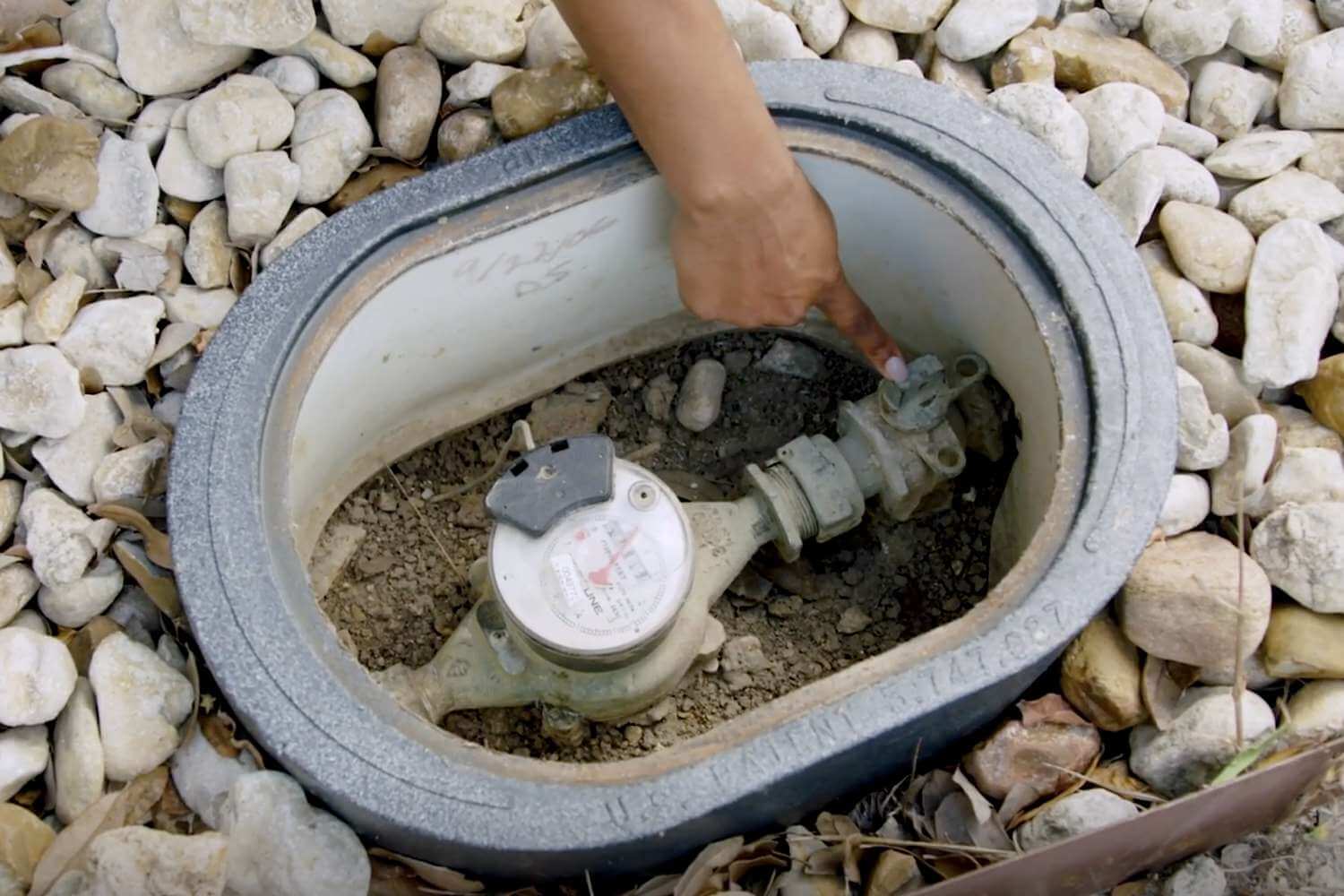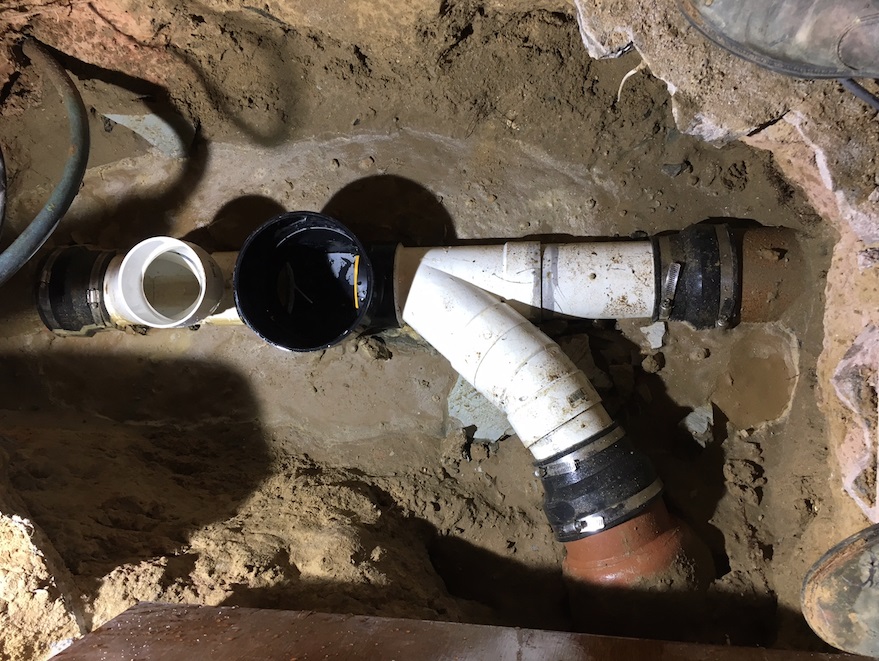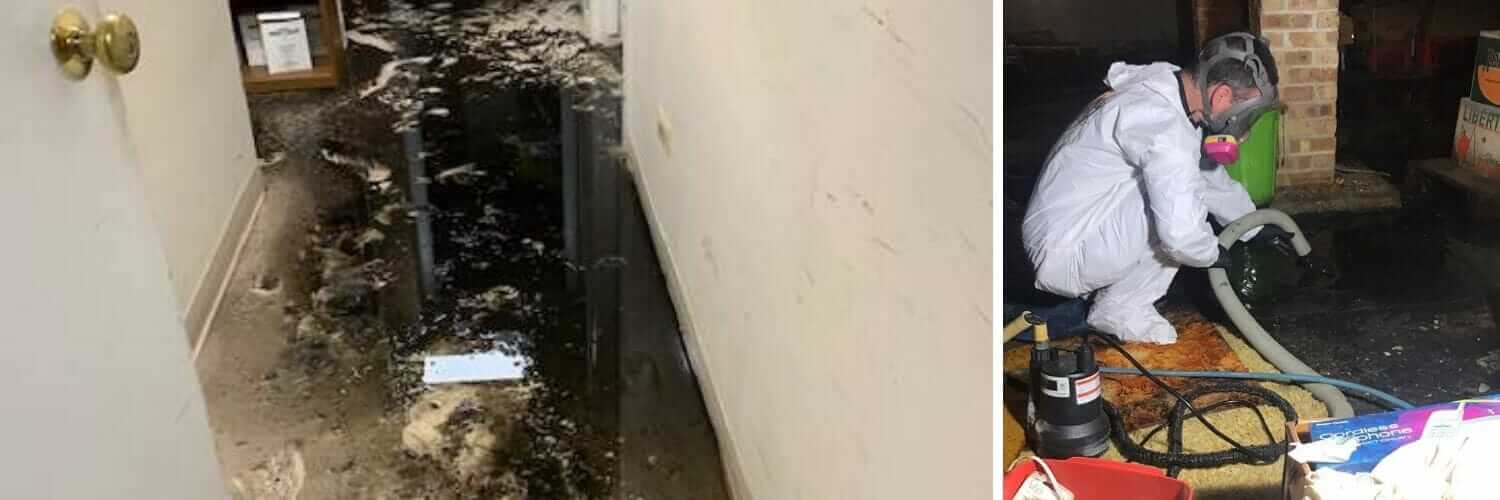Do you know how to clean up raw sewage in basement?
The smell of sewage is usually unpleasant regardless of where it comes from. One of the last places you want sewage backing up is into your home.
Unfortunately, raw sewage can back up into your home and can cause diseases.
Do This First

The first step in cleaning raw sewage in your basement is to identify where it’s coming from. Sewage backup has to be dealt with quickly and efficiently. In the event of raw sewage backup in your basement, you will need to evacuate everyone from the affected area, and turn off the power and water supply.
Depending on the severity of the spill, you may be able to take some steps to salvage the situation or even handle the entire problem yourself. But bear in mind that sewage cleanup is a laborious and risky job, so don’t undertake this task unless the spill is easily manageable.
Regardless of whether you intend to use professional sewage cleanup services or you want to attempt DIY sewage cleanup, there are important safety measures to put in place.
- Keep everyone including pets away from the affected area
- Call the utility service providers and have them shut down the power and water supply to your home. If the basement is not completely flooded, you can turn off the power and water supply yourself.
- Increase ventilation in the affected area by opening the windows if there are any.
- Call the professionals if the spill is too much for you to handle
Why is Sewage Backing Up Into My Basement?

When you have sewage backing up into your basement, it could have several causes. Most times, it is a result of a problem with the main sewage drain line.
And because your basement is the lowest point in your house, it now becomes the easiest means of escape for the excess water. Some of the causes of sewage backing up are out of your control but others can be avoided.
Some common causes include:
- Clogs
A clog is caused by something that went into one of your drains or toilets. It could be food, hair, paper, sanitary pads, debris, or any other solid object that can become trapped in your pipes. This blockage problem is the most preventable.
Damaged sewer lines
If your sewer pipes are older, they could have rusted or cracked. This is especially true if you have metal or clay pipes.
- Overgrown Tree Roots
Under the ground, tree roots can overshoot and break, dislodge, or even grow through your sewer lines. Shrubs and trees seeking moisture can make their way into sewer lines, eventually damaging the pipe and causing sewage backup.
One way to prevent tree roots from entering your sewer pipes is by installing new plastic pipes for any leaks or other problems.
- Flooding
The city’s drainage system is equipped to deal with the outcomes of massive rainfall. But if there’s more rain or flooding than the city’s drainage can handle, having no other place to go, there may be a backflow of water into your home.
Related: Water Coming Up From The Ground After Heavy Rain
How to Clean Up Raw Sewage in Basement

- Get Protective Gear
As the name implies, sewage contains all things flushed down the toilet. And in this case, the sewage may not only be from your toilet and that’s just the sliver of the nasty compounds it holds.
Because of this, you will need all the protective gear you can get before going anywhere near it.
Wearing protective gear will prevent any contaminants from getting on your skin or inside your body. You must not fully cover yourself but there are certain essentials like rubber boots, gloves, and face protection.
- Quarantine the affected area
Sewage in your basement is already an issue but having this sewage in the rest of your home is going to be a disaster.
Ensure you close off the affected areas to prevent anyone or even household pets from carrying sewage water into other areas of your home. This will prevent airborne microbes from finding a breeding ground throughout your home.
- Find the source of the sewage back flow
This should be a top priority once you’ve protected yourself and quarantined off the area. Cleaning up the raw sewage without identifying where it is coming from will be a wasted effort. If you’re struggling to find the source, reach out to a professional contractor and have them do an inspection.
- Remove all contaminated materials
Removing everything that has come into contact with the dirty water and even the rest of the untouched stuff in the basement can be challenging but it’s necessary if you want to thoroughly disinfect and restore your basement.
Move out every piece of furniture, flooring, or object that may be contaminated. It’s better if you have a door leading directly out of your basement, so you don’t have to move all this stuff through your house.
- Shovel out the sludge
This is where you’ll have to get your hopefully gloved hands dirty. Whenever there is a backflow from the sewage lines, there will always be tons of debris or sludge left over.
Using a shovel, remove everything before you begin sanitizing your basement. Shovel all the debris and sludge into strong plastic bags and dispose of them immediately.
- Scrub the surfaces
Using a solution of household chlorine bleach, such as Clorox or Purex, spray down the affected area. Let disinfectant remain in place for at least one-half hour.
Use a cleaning brush(preferably) or rag to scrub down all the contaminated surfaces. Follow up with a deep cleaning using an antimicrobial cleaner for sewage and plenty of water.
Ensure you take extra care when cleaning the floors, scrubbing them well with a brush dipped in a solution of one part chlorine bleach and four parts of water. Rinse the floor thoroughly with clear water.
- Dry off excess water
Remove the excess water and let the washed area air dry. Bear in mind that you will need to dry the area within 24-48 hours to reduce the risk of mold growth.
However, you will need to inspect your property at a later date for mold-the increased moisture level in the vent of a sewage backup may result in mold growth, even on surfaces that haven’t been in contact with the wastewater.
If you find any visible mold, use EPA-approved mold cleaners to kill the spores and disinfect all affected surfaces.
Do I Need a Professional?
Even though seeking the help of a professional is highly recommended, it is not absolutely necessary. So how then do you know when you need a professional sewage backup cleanup?
- When the spill is not confined to your basement alone.
- When the backup has been sitting for over 24 hours. This is because bacteria and viruses will have spread at this point constituting a significant health risk for you.
- When the spill is caused by a sewer or septic tank backup
- If there’s any possibility that this spill may have contaminated your home’s air-conditioning system.
- If you or a family member have a health condition that will be aggravated by the contaminants in the wastewater.
Basement Sewage Cleanup Cost

The national average for basement sewage cleanup costs about $7 per square foot. You can expect to pay somewhere between $2000 and $10000. [2]
Your immediate priority when experiencing a basement sewage backup will be to stop the leak and repair the damage. You’ll need to call a plumber to achieve this, and you’ll most likely pay between $59-$79/hour or a project fee of $250-$400.
This cost doe not include the cost of materials and cleanup costs. In addition, several other factors may increase the overall cost. These factors include
- Amount of Sewage
This is one of the biggest factors that will drive the cost of your basement’s sewage cleanup higher than budgeted. The amount of sewage involved depends on what caused the backup.
- Size of the Area
This is another obvious factor that will influence how much the cleanup company will charge you. A small backup in a laundry room is way cheaper to repair than a spill that covers your entire basement.
- Plumbing Repairs
Depending on what caused the sewage backup, you may need plumbing repairs as well. For example, it will cost more to repair a cracked sewer line than to clear a clog.
Read Also: Buying House With Polybutylene Pipes
Final Thoughts
Sewage spills are unpleasant to handle, and they require prompt and efficient action to ensure your safety and that of your family. These guidelines are meant for small projects, but some cleanup jobs will be too much to handle even for the bravest DIY warrior.
In such cases, it is highly recommended to call a cleaning professional to handle the job.

Michael Davis is a heating & plumbing expert who currently works as independent contractor in SC. He also writes for Plumbertip.
For almost 10 years he worked on various plumbing tasks across South Carolina.



